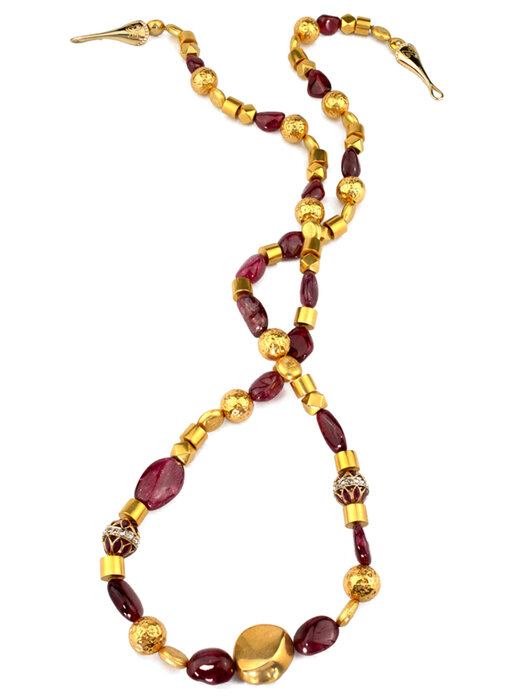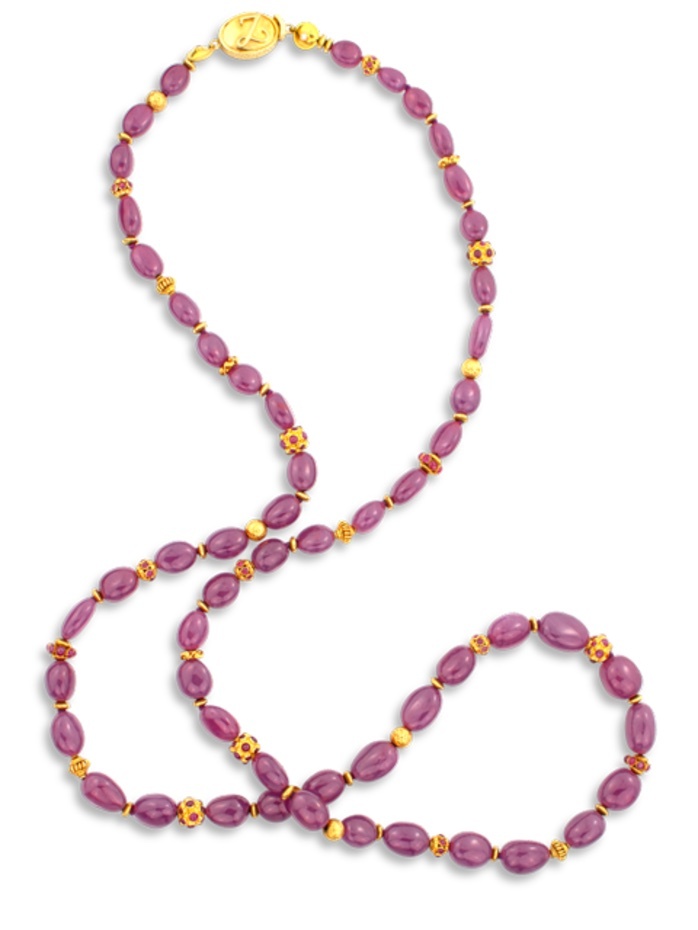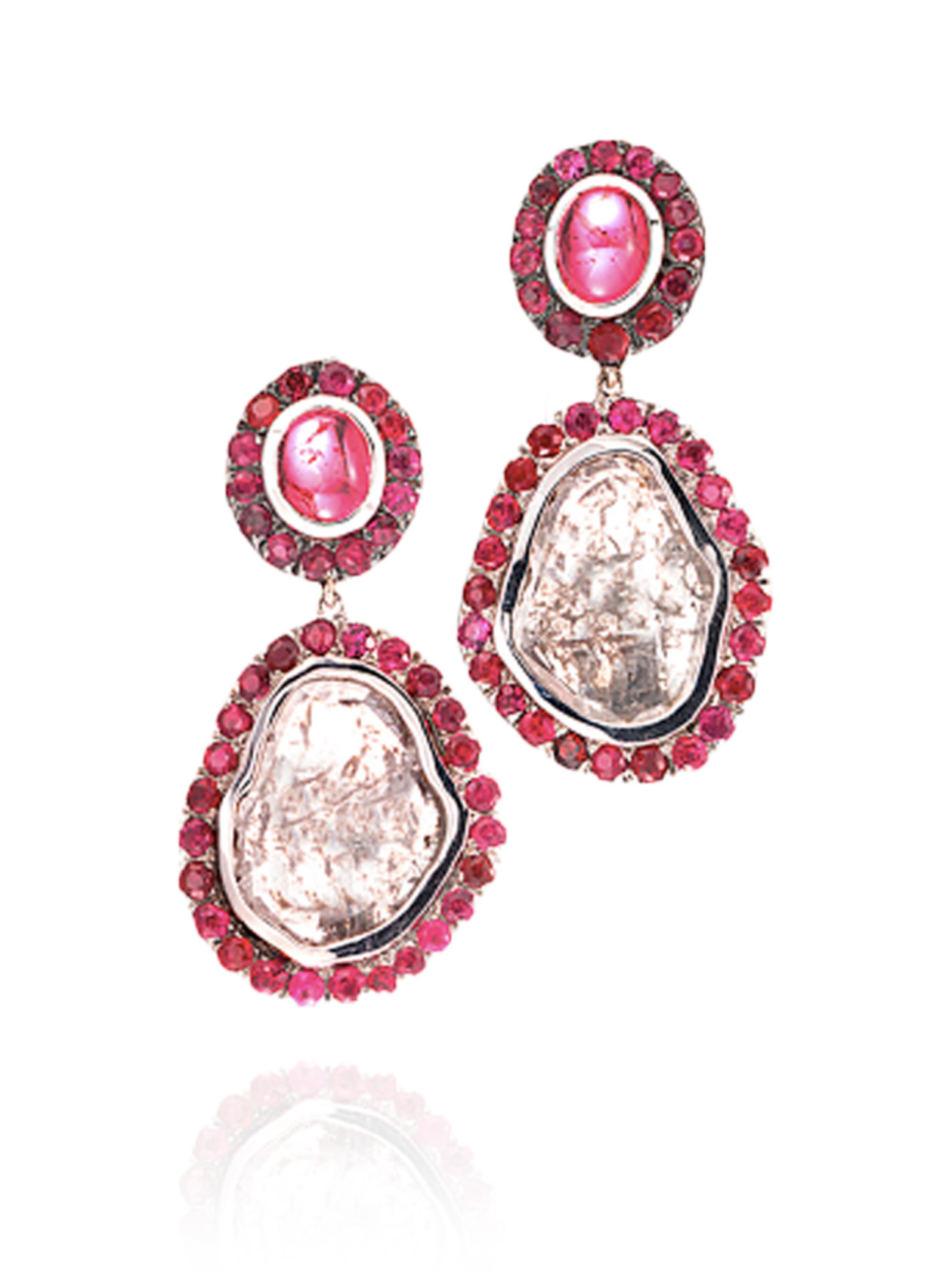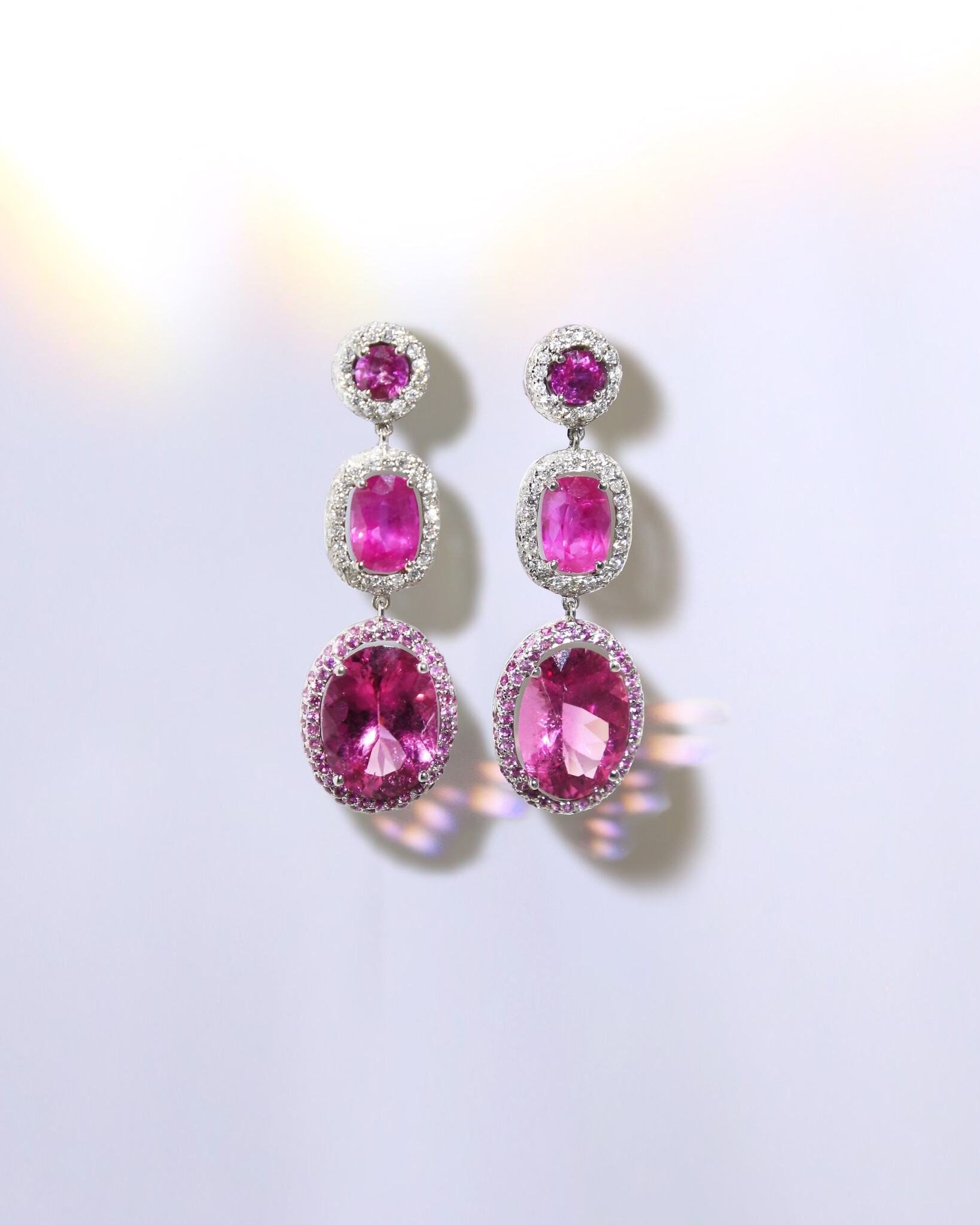
The Science Behind Ruby
Ruby, derived from the Latin word ruber meaning red, is one of the four most precious stones, among emeralds, sapphires, and diamonds.
The formation of natural ruby occurs deep within the earth’s crust under intense heat and pressure. In the process known as crystallization, the minerals transform from a molten state to a crystallized form. Only in the rarest mineral combinations, with the presence of chromium, does a stone take on the stunning red hue and become a ruby. This process can take millions of years, making natural rubies all the more desirable.
Ruby’s exceptional value is also due to its great scarcity on earth, as the stone exists in few places. Found in areas with metamorphic rock such as marble, gneiss, and schist, most rubies are formed in the regions of Myanmar, Thailand, Sri Lanka, Madagascar, Tanzania, and Mozambique. Therefore, high-quality, natural ruby specimens are extremely uncommon. Tamsen Z is proud to employ these most prized and rare examples in our ruby jewelry.
Rubies are characterized by both their magnificent rich red hue and their pleochroic properties. Pleochroic, meaning more colors, refers to ruby’s ability to display a range of colors when viewed from different angles. These range from hues of pink to orange, purple, and even blue. Rubies are also notable for their strong fluorescent properties, which vary by the region from which they originate. Burmese rubies fluoresce most, both in saturation and intensity and are famous for their ability to glow brightly under ultraviolet light.
Historical Significance and Symbolism
With a historical significance as rich as the stone's stunning red hue, ancient societies have revered, treasured and traded rubies since 200 BC. The ancient traditions of ruby appear in religious relics and the adornment of royalty. Essential to rulers throughout history, “the king’s gem”, features prominently in scepters and crowns. Its incredible durability allowed it to withstand battle; the blood red stone glittering triumphantly upon royal armor was believed to provide protection to its wearer.
The appearance of the color red in nature is a rare phenomenon. The ruby’s other-worldly red hue mystified its early beholders, inspiring mythology and surrounding the stone with symbolism. The special meaning ascribed to the stone has appeared in mankind's most significant early texts, such as its frequent use in the bible, where ruby is considered to be the most precious of the 12 stones created by God. In European cultures, rubies have been associated with beauty, health, wisdom, wealth, and success in love.
Ruby retains its significance and value today, remaining highly prized in gemology. In our time, the associations and symbolism of ruby are most present in its role as July’s birthstone. Ruby jewelry represents its July-born wearers, reflecting their integrity, courage and is believed to enhance their innate predisposition to good fortune and happiness.
With the ruby’s breathtaking fiery red hue, symbolism, and preciousness, its importance is solidified as a distinguished centerpiece in modern jewelry. The artful conceptions of this precious red stone by our founder and designer Ann Ziff exemplify ruby’s contemporary reimagining. In this July edition of the Journal, we are shining a spotlight on some of Tamsen Z’s ruby pieces.
Ruby and Gold Necklace

With a 9.0 hardness on the Mohs scale, ruby is durable and can be cut into nearly any shape, making it ideal for use in jewelry. Ruby beads have long been recognized for their value and beauty. The beauty of rubies lies in their imperfections. Natural rubies are very rarely found inclusion-free. Clear, brilliant rubies are typically treated with heat to achieve a shiny finish. Similar to emeralds, rubies are commonly found with inclusions and, in some cases, the inclusions add to the gemstone's ability to reflect light. Despite inclusion-free rubies being extremely rare, clarity remains an important determinant of value.
The second determinant of a ruby's value is its coloring. Rubies with deeper shades of red and a slight purple hue are considered the most valuable. Slight color differences can dramatically affect value. Sourcing rubies with deep coloring that also present a high degree of clarity is immensely challenging.
Our Ruby and Gold Necklace features 554 carats of ruby beads separated by 18k yellow gold rondelles. Measuring 38 inches in length, this necklace skillfully showcases the natural beauty of rubies. When cutting rubies, experts can cut the ruby such that it reduces orange and pink hues and draws out deep red and purple hues. The ruby beads displayed in our Ruby and Gold Necklace artfully preserve the ruby's natural beauty by showing their incredible size, rarity, and high-value color and clarity.
Diamond Slice, Spinel, and Ruby Earrings

Ruby and Pink Sapphire Ring

Ruby, Sapphire, and Rubellite Earrings

Conclusion
Ruby gemstones possess a history and symbolism that has led to an enduring significance that remains today. Respected, collected, and traded by ancient societies, the value that rubies hold is undeniable. Transcending cultures and religions, rubies are regarded as one of the most precious gemstones in nature. Symbolizing beauty, health, wealth, wisdom, and success in love, rubies are the ideal gemstone for jewelry.
Held near to its wearer at all times, the power of rubies is undeniable. And, their beauty as displayed in Ann Ziff’s designs, demonstrates their ability to glow and exude sophistication. At Tamsen Z, maintaining the integrity of gemstones and displaying their natural beauty, inclusions and all, is at the heart of each of our designs. Discover our spectacular collection-quality ruby jewelry designs, as imagined by Ann Ziff.